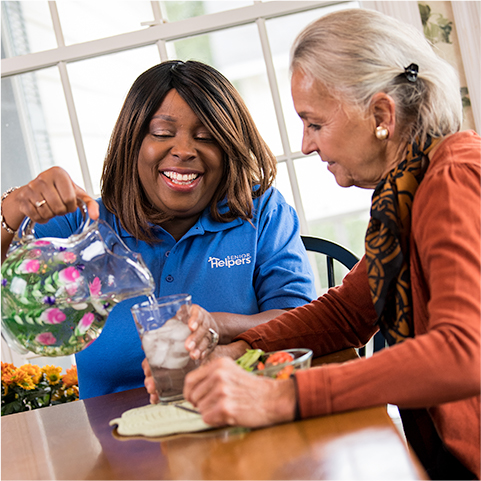Decontaminating to Protect Seniors
Older adults are at increased risk for any disease, and that applies for the COVID-19 epidemic. 8 out of 10 COVID fatalities are from adults aged 65 or older, and the greatest risk for the disease is for seniors aged 85 or older. Because of this increased risk, it is vital for the health and safety of all involved that, when dealing or interacting with seniors, extra care is taken to ensure they stay protected from the disease.
The first and most important step in preventing transmission of COVID to seniors, or anyone else for that matter, is wearing a mask. For best results, choose a mask that fits snugly over your mouth and nose, with at least two layers of breathable fabric. Masks prevent exhaled moisture that could carry the virus from reaching the air. Combined with maintaining the social distance of 6 feet, this helps reduce transmission rates.
Handwashing is another critical step. Germs can spread very easily if unwashed hands come into contact with surfaces. Washing your hands before and after handling food, garbage, using the bathroom, preparing food, treating someone who is ill, blowing your nose, coughing, or touching pets or pet food, are all vital actions to keep seniors safe. If soap and warm water are not available, then using a sanitizer solution with at least 60% alcohol content is an acceptable substitute.
Cleaning and disinfecting is also very important. Hard and soft surfaces, laundry, heating and air conditioning, and electronic devices can all unknowingly carry the disease and require both a surface cleaning, and then a disinfection step. Wearing disposable gloves while performing any cleaning tasks can help prevent you from taking any germs with you once the task is complete.
Hard surfaces, like counter tops, tables, or toilets, can be disinfected by first cleaning the surface with soap and water, and then followed with a chemical disinfectant. When using a chemical disinfectant, it is important to first thoroughly read, and then follow, any and all instructions on the label, to ensure both personal safety, and proper disinfection.
Soft surfaces, like carpets, linens, and furniture, can be cleaned with water and cleaner appropriate for fabric use, or laundered in the washing machine with the warmest allowable setting and then allowing them to dry completely. If the laundry is coming from a sick person, consider keeping it in its own hamper, wearing gloves while handling it, and washing it separately from other laundry. And don’t forget to clean an disinfect the hampers as well.
Electronics, such as touchscreens or remotes, first consider using a cover that will allow you to wipe them clean with a disinfectant, without risking damage to the underlying electronic components. Failing that, follow the manufacturer’s instructions for cleaning and sanitizing. Generally, you’ll want to power the device off, and use a soft cloth to apply any cleaning solution to the item. Never spray or pour chemicals directly onto your electronics.
Ventilation systems can help reduce the concentration of viral particles in the air. Ensure your filter is installed correctly, and consider upgrading to the highest efficiency filter compatible with your system. Opening windows to allow for airflow in and out of the home is also helpful.
